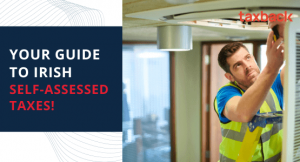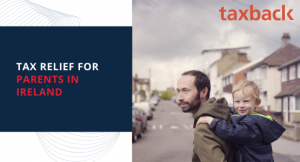How Being Married Affects Your Taxes in Ireland - The Secret of Aggregation Relief
Did you know that if you're married and your spouse doesn't live in Ireland, you may be entitled to some valuable tax reliefs? Yes, it's true, and it can significantly increase your refund.
That’s right - you could be due an extra tax refund from a relief fund known as Aggregation Relief.
However, not many Irish workers are aware that this relief is relevant to their situation.
That’s where Taxback comes in!
We’ve created this blog post which will provide you with everything you need to know about this tax relief, providing you with the tools to successfully claim your refund!
What is Aggregation Relief in Ireland?
Officially known as the ‘Non-Resident Aggregation Relief’, you may be able to claim it when the combined income of the two of you isn’t fully taxable in Ireland.
Essentially, it comes into play when the total income of both you and your spouse isn't fully taxable in Ireland. Think of it as a tax relief designed to ease the financial burden on married couples!
This is just one of a number of tax reliefs that can help you secure an Irish tax refund!
The aim of the non-resident Aggregation Relief is to significantly ease the tax burden of married couples.

How much can I claim back through the Aggregation Relief?
The amount you can claim will vary with each person.
Essentially, it will come down to factors like how much you earn.
Below you can find a case study of how much can be claimed.
In 2023, Peter has an income of €60,000. Peter's spouse, Marian, is a non-resident, staying at home with no income source.
As a single person, Peter has a standard rate band of €40,000.
Peter’s 2023 Tax Credit:
Single Person TC: €1,750
Employee PAYE TC: €1,750
Total: EUR 3,550
Peter and Marian are a married couple from Romania. Peter is working in Ireland and Marian has remained at home in Romania with their three children.
In 2023, Peter has an income of €60,000, Marian has no income as she is at home caring for their children.
If taxed here in Ireland as a single person Peter would pay a tax of €12,450. However, as he is married he can claim non-resident aggregation relief and as a result benefit from the tax credits, rates and bands available to jointly assessed married couples.
This would greatly reduce Peter's tax due for 2023 down to €8,875 and would result in a refund of €3,575 for Peter.
If Marian did have income it is also likely they would still be due a refund. Let's assume Marian has an income in Romania of €10,000 in 2023. As above Peter would pay a tax of €12,450 as a single person here in Ireland but because he is married he could file a claim for aggregation relief, including Marian's income from Romania and still be eligible for a refund of €3,206.
Aggregation relief is a hugely beneficial relief to claim if you are married but your spouse is not here in Ireland regardless of whether they have income or not.
Get Your Irish Tax Refund Now!
Can cohabiting couples share tax credits?
Many couples in the modern world are choosing to go down the route of cohabitation, rather than marriage.
However, at this moment in time, each partner in a cohabiting couple is still seen as a separate entity for tax purposes.
With that in mind, cohabiting couples cannot file joint assessment tax returns.
This means that they can not share their tax credits and tax bands in the way that married couples can file a tax return.

Do married couples pay less tax in Ireland?
When a couple ties the knot, they can choose to file through what is known as ‘Joint Assessment’ - allowing you to transfer most of your tax credits, reliefs and rate band with your spouse or civil partner.
Essentially, this allows you to reduce the amount you have to pay at the highest rate of tax, which in 2023 is €49,000.
Remember, the standard rate of tax is 20%, with the rest then taxed at 40%.
However, when both partners have income this standard rate cut-off point can increase by a significant amount, which is €49,000 for married couples with one income and €80,000 for married couples with two incomes.
If both of you are in the higher tax bracket then it is unlikely that you will pay less tax.
In a nutshell, from a tax point-of-view, it can oftentimes be beneficiary to be married in Ireland.
Get Your Irish Tax Refund Now!
How can I claim this relief?
It is possible to claim this tax relief manually, by logging into the Revenue website and submitting the relevant documents.
However, many people find this process understandably difficult and time-consuming.
Using Taxback is the easiest way to claim this relief successfully!
Not only will we assess your eligibility to claim the Aggregation Relief, but we will also check to see if there are any other tax reliefs relevant to you to help you boost your Irish tax refund!
We will provide a four-year tax analysis of your situation and if you are due a tax refund, we’ll complete all those boring forms so you don’t have to!
Sounds good, right?
Simply get started today to secure your refund ASAP!




